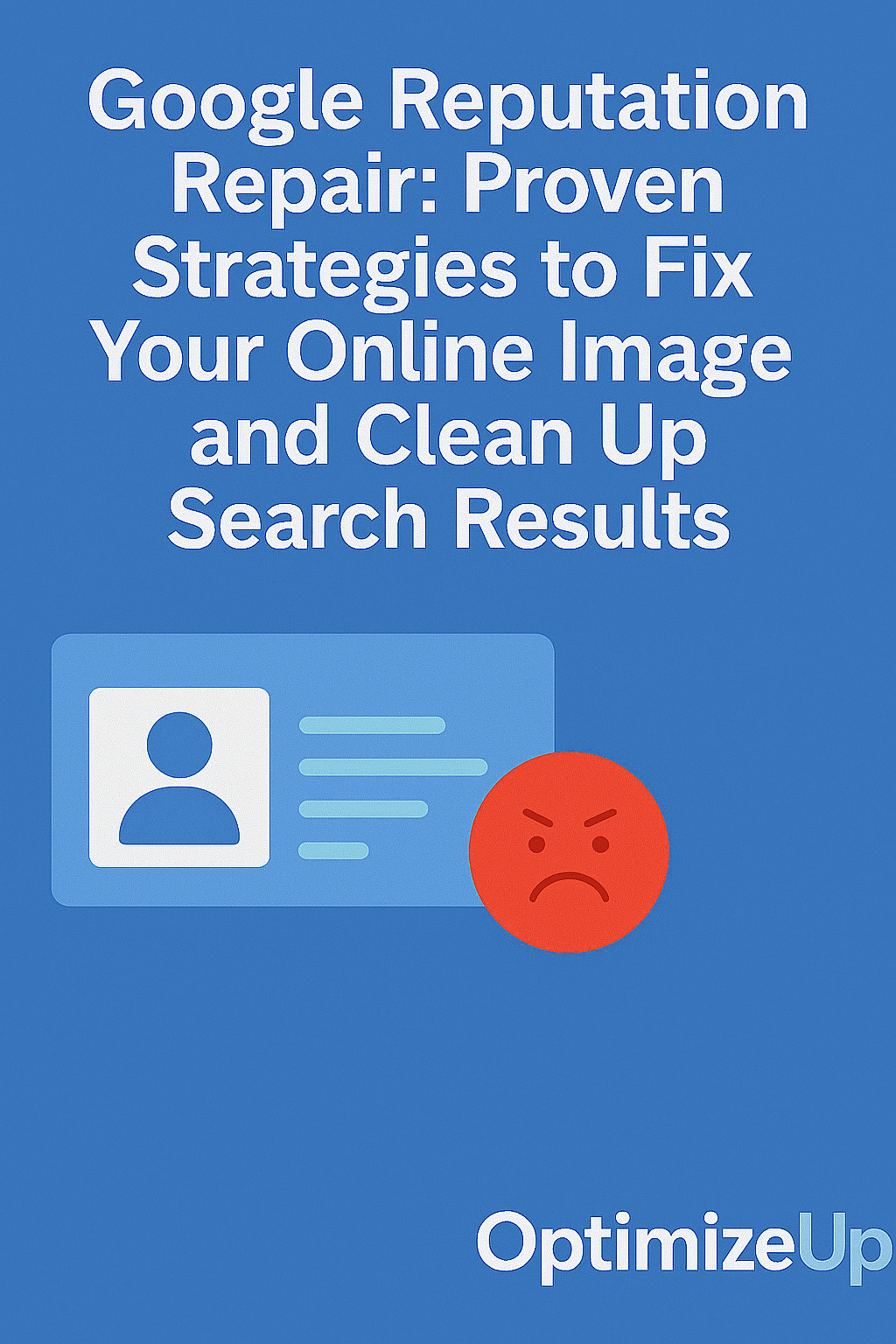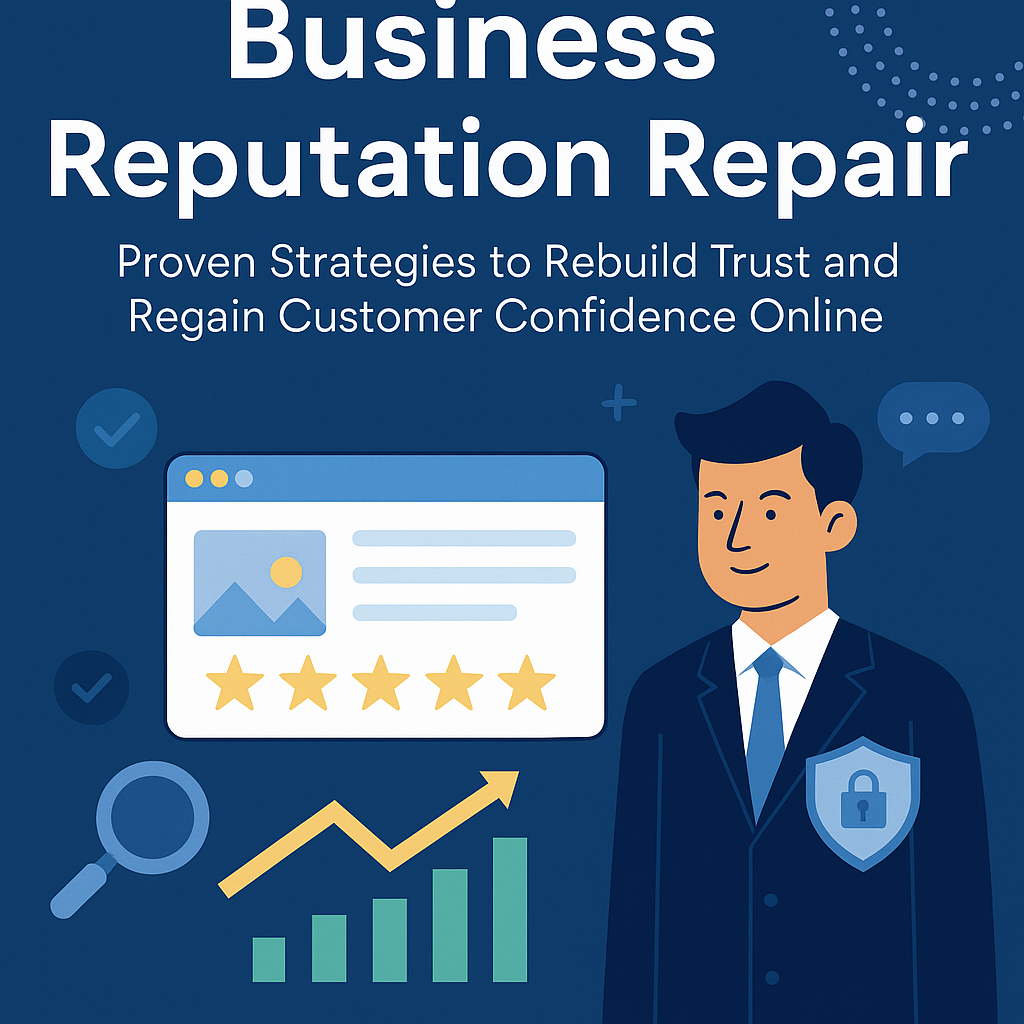Why Google Reputation Repair Matters More Than Ever
In today’s information-first world, Google functions as a personal and business resume. People search your name, brand, or business before making decisions—whether hiring you, dating you, investing in you, or choosing your service. Unfortunately, negative content on Google’s first page can derail opportunities instantly.
The issue isn’t just with what’s true—it’s also about what’s outdated, irrelevant, or outright misleading. A bad news article from ten years ago, a mistaken mugshot, or a fake review can hijack your reputation.
Luckily, there are structured, proven methods to take control back. Google reputation repair is a multifaceted process that includes:
- Suppressing or removing negative search results
- Creating positive, search-engine-optimized content
- Building domain authority around your name or brand
- Monitoring ongoing threats
This guide provides a step-by-step approach to restore trust, visibility, and authority online.
Table of Contents
- Understanding Google’s Search Mechanics
- What Triggers Reputation Damage on Google
- Step-by-Step Google Reputation Repair Tactics
- Removing Content
- Suppression Techniques
- Authority Building
- Best Practices for Personal Reputation Repair
- Tools and Services for Reputation Monitoring
- DIY vs. Hiring a Professional
- How Optimize Up Can Help
- FAQs
- Works Cited
Understanding Google’s Search Mechanics
To fix how you appear on Google, you must understand how the search engine ranks content:
- Authority: High-authority websites like news sites, government pages, or educational domains rank quickly.
- Recency: Google often prioritizes fresh content.
- Engagement Metrics: Pages with more views, shares, backlinks, and time-on-site tend to rank better.
- On-Page SEO: Proper keyword use, formatting, and metadata improve visibility.
Thus, improving or suppressing what ranks about you requires both technical and content-driven work.
What Triggers Reputation Damage on Google
Google doesn’t judge your character—it simply indexes what’s publicly available and relevant. Unfortunately, this includes:
- Negative News Articles
- Court Records or Mugshots
- Unfavorable Blog Posts or Forum Threads
- Social Media Attacks
- Fake Reviews
- Old or Inaccurate Information
These items can live on the first page for years without intervention. That’s why action is crucial.
Step-by-Step Google Reputation Repair Tactics
1. Attempt Content Removal
Start with the path of least resistance:
- Contact Website Owners: Politely request removal, especially if content is outdated, inaccurate, or harmful.
- Submit Legal Requests: Use Google’s content removal tools for defamation, copyright, or personal data issues.
- DMCA Takedown: If someone is misusing your intellectual property, file a DMCA complaint.
- Right to Be Forgotten (EU only): EU citizens can petition for de-indexing via Google’s RTBF form.
2. Suppress Negative Results
If removal fails (which is common), you’ll need to bury the unwanted results by creating content that outranks them.
Build and Optimize Owned Web Properties
- Create a personal website (yourname.com)
- Claim and optimize social profiles (LinkedIn, Twitter, Instagram, YouTube)
- Publish blog posts and media-rich content regularly
Publish on High-Authority Platforms
- Contribute to Medium, Quora, LinkedIn Articles, or Substack
- Use press release distribution via Newswire or PRWeb
Focus on SEO-Centric Content
- Use variations of your name (e.g., Jonathan D. Smith, Jon Smith)
- Add location and industry keywords
- Optimize titles, meta descriptions, headers, and image alt tags
Link Building
Build backlinks to your positive content from:
- Guest posts
- Forums
- Profile links
- Business directories
Google prioritizes pages with strong backlinks, so this step is critical.
3. Strengthen Domain Authority
Google trusts websites with more authority. To increase yours:
- Regularly update your content
- Maintain clean technical SEO
- Avoid duplicate content
- Add schema markup for name, occupation, etc.
- Engage on reputable platforms
4. Utilize Multimedia Content
- Upload videos to YouTube with your name in the title/description
- Add photos to your Google Business Profile
- Use podcasts and interviews to boost reputation
Best Practices for Personal Reputation Repair
- Act Fast: The longer a negative result sits, the more traffic and trust it gains.
- Keep Personal Profiles Updated
- Google Yourself Weekly
- Set Up Google Alerts for Your Name
- Don’t Engage With Trolls or Defamatory Threads
- Avoid Paid Link Schemes
Tools and Services for Reputation Monitoring
Free Tools
- Google Alerts
- Social Searcher
- Mention.com (Free Tier)
Premium Platforms
- BrandYourself
- Reputation.com
- BuzzSumo
- SEMrush (for backlink analysis)
These tools help you track sentiment, mentions, and threats to your online reputation.
DIY vs. Hiring a Professional
Repairing your Google image is possible solo—but it’s labor-intensive. You must write, design, optimize, and promote content while handling SEO and outreach.
Professional firms like Optimize Up offer:
- Content creation and SEO
- Legal support for takedowns
- Networked press opportunities
- Long-term reputation management planning
- Real-time monitoring
If your career, business, or personal life is impacted, hiring an expert ensures fast, structured results.
How Optimize Up Can Help
At Optimize Up, we specialize in Google reputation repair with custom solutions for:
- Business owners
- Executives
- Professionals facing false accusations
- Individuals with outdated or embarrassing online content
🔍 Get a free reputation evaluation and take the first step toward reclaiming your good name.
FAQ: Google Reputation Repair
No, but you can suppress or request removal of specific content.
Anywhere from a few weeks to several months depending on the severity and competition.
Only in cases of defamation, legal orders, or EU Right to Be Forgotten claims.
DIY can be free. Professional services range from $500/month to $10,000+ depending on complexity.
Sometimes. Report them through the platform or submit a legal removal request.
Suppression hides negative content by pushing it down in search results. Removal deletes it from the web or Google index.
Temporarily, yes. Ads can appear above organic results.
Yes, as long as you aren’t deceiving users or manipulating search engines through black-hat tactics.
Works Cited
- Google. “Removing content from Google.” https://support.google.com/websearch/troubleshooter/3111061
- Moz. “What Is Online Reputation Management?” https://moz.com/learn/seo/what-is-online-reputation-management
- Search Engine Journal. “Advanced Online Reputation Management Guide.” https://www.searchenginejournal.com/online-reputation-management/
- Forbes. “Why Online Reputation Management Is Essential in 2025.” https://www.forbes.com/sites/forbestechcouncil/





